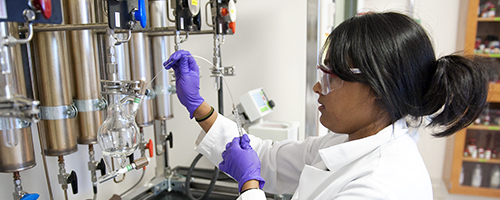Extremophilic Fungi from Marine Environments: Underexplored Sources of Antitumor, Anti-Infective and Other Biologically Active Agents
This document has been relocated to https://scholarworks.smith.edu/chm_facpubs/52/
Abstract
Marine environments are underexplored terrains containing fungi that produce a diversity of natural products given unique environmental pressures and nutrients. While bacteria are commonly the most studied microorganism for natural products in the marine world, marine fungi are also abundant but remain an untapped source of bioactive metabolites. Given that their terrestrial counterparts have been a source of many blockbuster antitumor agents and anti-infectives, including camptothecin, the penicillins, and cyclosporin A, marine fungi also have the potential to produce new chemical scaffolds as leads to potential drugs. Fungi are more phylogenetically diverse than bacteria and have larger genomes that contain many silent biosynthetic gene clusters involved in making bioactive compounds. However, less than 5% of all known fungi have been cultivated under standard laboratory conditions. While the number of reported natural products from marine fungi is steadily increasing, their number is still significantly lower compared to those reported from their bacterial counterparts. Herein, we discuss many varied cytotoxic and anti-infective fungal metabolites isolated from extreme marine environments, including symbiotic associations as well as extreme pressures, temperatures, salinity, and light. We also discuss cultivation strategies that can be used to produce new bioactive metabolites or increase their production. This review presents a large number of reported structures though, at times, only a few of a large number of related structures are shown.


